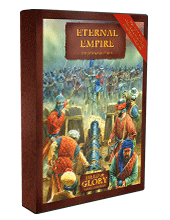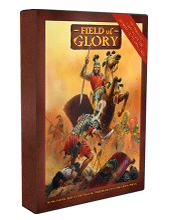Eternal Empire
This army guide covers the armies of the Ottoman Empire and its enemies and allies from 1299 to 1500 AD.
During this period the Ottoman state expanded from a tiny ghazi beylik in the north-west tip of Anatolia into a mighty empire occupying modern Turkey, Greece, Bulgaria, Serbia, Albania, Macedonia, Bosnia and parts of Romania. In the process it swallowed up the Anatolian emirates, the Byzantine Empire, the Latin states in Greece, the Bulgarian and Serbian Empires, Albania and Bosnia, and made vassals of the Principality of Wallachia and the Khanate of the Crimea. It also came into conflict with the Kingdoms of Hungary and Poland in the West and Timur (Tamerlane) and subsequently the White Sheep Turcomans in the East.
In a sense, the wars of Ottoman expansion in the West were a continuation of the Crusades, with the boot being on the other foot as the Christian states of south-eastern Europe were progressively invaded and conquered by the forces of Islam.
When Constantinople fell to the Turks in 1453, this ended 1,500 years of Roman Imperial history in the East and marked the final extinguishment of the Roman Empire, which had fallen in 476 AD in the West. Constantinople (modern Istanbul) became the capital of the young and aggressive Ottoman Empire, which continued to expand in the 16th century until it threatened the very existence of Christian Western Europe.
This period also saw the rise and fall of other states: The decline of the Tatar Golden Horde was matched by the amazing territorial expansion of the Grand Duchy of Lithuania and the expansion of the Great Principality of Moscow to rule most of the former Russian principalities and form the basis of the modern state of Russia. The Ordensstaat of the Teutonic Knights in the Baltic reached its maximum expansion before being defeated and losing most of its territories.
These times also saw the first Protestant (Hussite) Reformation in Bohemia, and the first wars of religion between Catholics and Protestants – in which the Hussites, with their innovative use of battle wagons, were mostly successful.
From a wargaming point of view, the era offers a wide variety of diverse and colourful armies, and a wealth of interesting tactical challenges. Whether relying on horse archery, the mighty charge of lance armed knights, or defensive formations of infantry secured by field fortifications or battle wagons, the armies in this book will always be thought provoking and entertaining.
Early Ottoman Turkish
Later Ottoman Turkish
Tatar
Late Byzantine
Later Russian
Later Serbian
Later Bulgarian
Later Lithuanian
Later Polish
Later Teutonic Knights
Catalan Company
Middle Hungarian
Moldavian or Wallachian
Albanian
Timurid, Black Sheep Turcoman or White Sheep Turcoman
Hussite
Later Hungarian



 Cart (0)
Cart (0)
